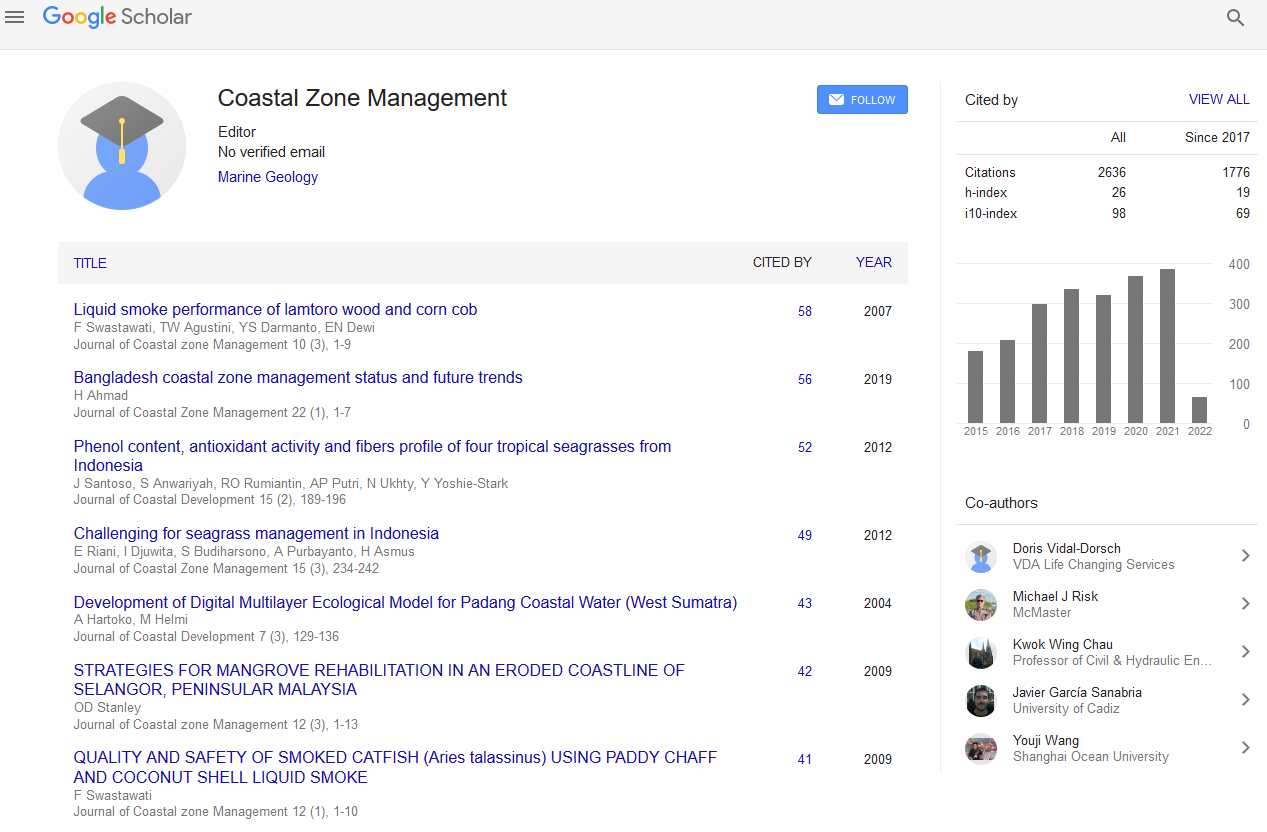Indexed In
- SafetyLit
- RefSeek
- Hamdard University
- EBSCO A-Z
- OCLC- WorldCat
- Publons
Useful Links
Share This Page
Journal Flyer

Open Access Journals
- Agri and Aquaculture
- Biochemistry
- Bioinformatics & Systems Biology
- Business & Management
- Chemistry
- Clinical Sciences
- Engineering
- Food & Nutrition
- General Science
- Genetics & Molecular Biology
- Immunology & Microbiology
- Medical Sciences
- Neuroscience & Psychology
- Nursing & Health Care
- Pharmaceutical Sciences
Abstract
The White Spot Syndrome Virus (Wssv) Load in Dendronereis spp.
Desrina, Sarjito, Alfabetian Harjuno Condro Haditomo, Diana Chilmawati
The white spot syndrome virus (WSSV), the causative agent of White Spot Syndrome Disease (WSSD), is a major shrimp pathogen in Indonesia. Dendronereis spp. is a ubiquitous Polychaetes and natural food of shrimp raised in brackishwater pond in Indonesia. The objective of this research is to determine the occurrence of WSSV and the viral load in Dendronereis spp. obtained from the shrimp pond. Dendronereis spp. was obtained with PVC (10 cm in diameter) from a traditional shrimp pond in Semarang vicinity. As a comparison, healthy looking Penaeus monodon was also obtained from the same pond. The occurrence of WSSV in Dendronereis spp. was determined with 1-step and nested PCR using primer for WSSV major envelope protein, VP 28. The viral load was counted with 1-step Real Time PCR. The WSSV was detected in Dendronereis spp. with 1-step and nested PCR. The point prevalence of WSSV infection in Dendronereis spp. is 90 %. The viral load ranged from 0 to 1.9 x 104 copy of DNA/μg total DNA. The viral load in Dendronereis is comparable with that of naturally infected and at carrier state P.monodon from the same pond. This is the first report of WSSV load in naturally infected Dendronereis spp.

